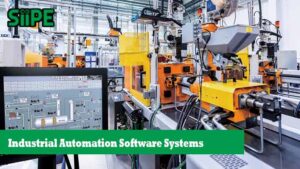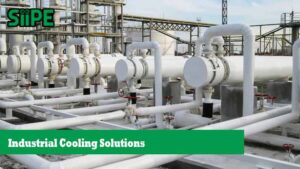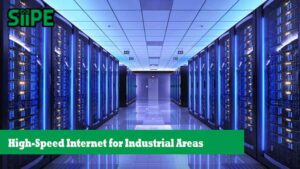As the global economy pivots toward sustainability, industrial estates—once known for their high energy consumption and carbon footprints—are at the forefront of change. Increasingly, these hubs of manufacturing and logistics are embracing renewable energy to power operations, reduce emissions, and future-proof their businesses.
But what does renewable energy look like for an industrial estate? Why is this shift gaining momentum now? And how can industries make the transition effectively?
Let’s explore.
What is Renewable Energy?
Renewable energy refers to energy generated from natural, replenishable sources like sunlight, wind, water, biomass, and geothermal heat. Unlike fossil fuels, these sources don’t deplete over time and produce little to no greenhouse gas emissions.
For industrial estates, the most common types of renewable energy include:
-
Solar Power (via photovoltaic panels)
-
Wind Energy
-
Biomass and Biogas
-
Hydropower (on a smaller, regional scale)
-
Geothermal energy (location-dependent)
Why Industrial Estates Need Renewable Energy
1. High Energy Demand
Industrial operations like manufacturing, warehousing, and processing consume massive amounts of energy. Electricity bills often form a significant portion of operational expenses. Renewable energy offers a way to cut costs in the long run.
2. Environmental Regulations
Governments across the world are tightening emissions laws and introducing carbon taxes. Industrial estates powered by fossil fuels may face penalties or higher operational costs unless they switch to cleaner alternatives.
3. Corporate Sustainability Goals
Many companies now follow ESG (Environmental, Social, and Governance) frameworks. Businesses in industrial estates must align with sustainability targets, especially if they serve global clients or are publicly listed.
4. Energy Security and Independence
With volatile fuel prices and occasional grid failures, having an independent, renewable source of power can stabilize operations and reduce dependency on external suppliers.
Benefits of Renewable Energy in Industrial Zones
✅ Cost Savings Over Time
Although the initial investment in renewable energy systems (especially solar and wind) can be significant, the long-term savings are substantial. Once the system is installed, energy is essentially free, and maintenance costs are low.
✅ Reduced Carbon Footprint
Switching to clean energy allows industrial parks to cut emissions dramatically, helping fight climate change and improving air quality in surrounding communities.
✅ Green Branding & Competitive Advantage
Sustainable operations are not just good for the planet—they’re good for business. Companies that use renewable energy often attract more customers, partners, and investors who value environmental responsibility.
✅ Grid Support and Energy Reliability
In regions where power outages are frequent or energy prices are unstable, onsite renewable systems can provide reliable backup or even full off-grid independence.
Real-World Examples
📍 Kawasan Industri Jababeka (Indonesia)
Jababeka Industrial Estate in Cikarang has been leading the push toward a smart and green industrial city, encouraging factories to install solar rooftops and supporting ESG initiatives across tenants.
📍 Tuas Industrial Estate (Singapore)
Singapore’s Tuas estate is integrating waste-to-energy systems and solar panels to reduce reliance on imported fossil fuels.
📍 Tesla Gigafactory (USA)
Tesla’s factories are powered largely by solar and battery systems, setting the standard for what a sustainable industrial operation can look like.
Challenges in Transitioning to Renewable Energy
Despite the benefits, the transition doesn’t come without challenges:
❗ High Upfront Investment
Solar panels, wind turbines, and energy storage systems require significant capital expenditure. Some businesses may find it difficult to justify the upfront cost.
❗ Space and Structural Requirements
To install a large-scale solar system, for example, companies need adequate roof space or land, along with structures strong enough to hold the panels.
❗ Regulatory Barriers
In some countries, complex permitting processes or unclear policies can slow down renewable energy projects within industrial estates.
❗ Intermittency and Storage
Solar and wind energy are intermittent—cloudy days or calm weather reduce output. Without reliable battery storage, this can disrupt operations.
Solutions to Overcome Barriers
To ease adoption, various models and technologies are now available:
⚡ Power Purchase Agreements (PPA)
Under a PPA, a third party funds, builds, and maintains the renewable energy system. The industrial tenant simply pays for the electricity used—often at a lower rate than the grid.
⚡ Hybrid Energy Systems
Combining renewables with the main grid or backup diesel generators ensures continuous supply while minimizing fossil fuel use.
⚡ Government Incentives
Many governments offer tax breaks, feed-in tariffs, or grants to encourage businesses to install renewable systems.
⚡ Smart Energy Management
Using IoT and AI, industrial parks can monitor, predict, and optimize energy usage to match supply and demand efficiently.
The Future of Renewable-Powered Industrial Estates
The future is promising. As technology improves and costs continue to drop, renewable energy will become the default choice for powering industries.
We can expect:
-
Industrial estates with 100% green infrastructure
-
Integration of EV charging stations, green logistics, and circular economy models
-
Use of carbon credits for companies generating excess clean energy
-
Collaboration between industrial estate developers and clean energy startups
Q&A Section
Q: Can renewable energy fully power an industrial estate?
A: Yes, depending on the energy needs and location. Many estates combine solar, wind, and battery systems with grid power in hybrid setups for reliability.
Q: How long does it take to break even on a solar investment?
A: Typically between 5–8 years, depending on system size, local energy prices, and available incentives.
Q: Is renewable energy reliable enough for 24/7 industrial operations?
A: With proper planning, storage, and hybrid models, renewable systems can support 24/7 operations effectively.
Q: How can smaller factories benefit from renewables?
A: Through rooftop solar panels, energy efficiency measures, or joining a shared energy system within their estate.
Renewable energy is no longer just a buzzword—it’s a practical, strategic asset for industrial estates worldwide. From reducing costs to improving sustainability and ensuring long-term energy security, the case for clean energy is stronger than ever.
As governments, businesses, and communities push toward net-zero goals, industrial estates have a unique opportunity to lead the charge and shape a greener, more resilient economy.











